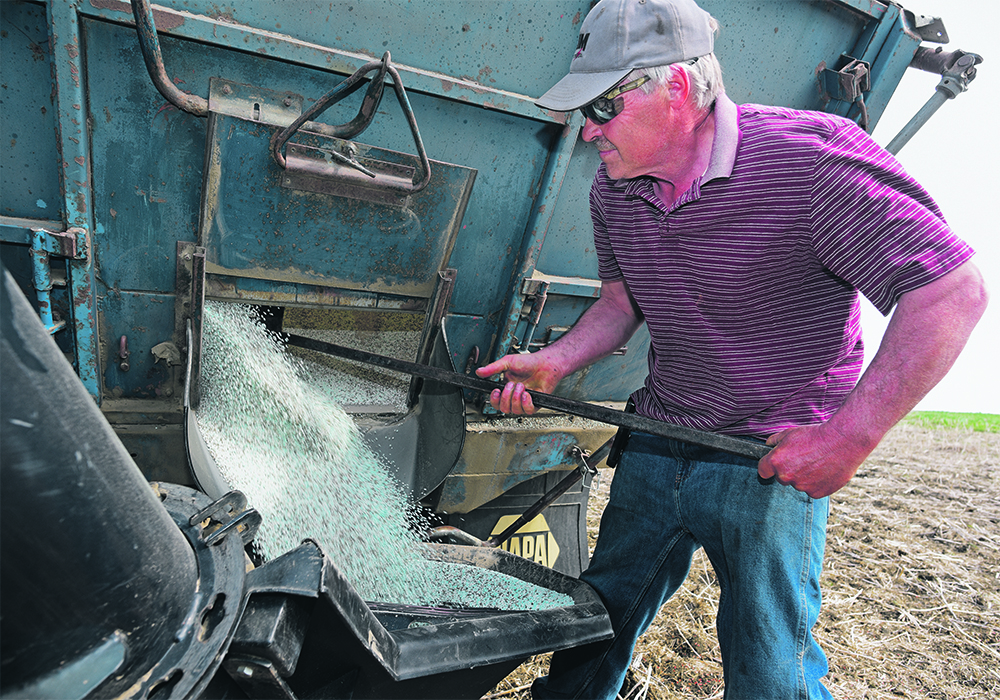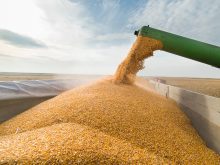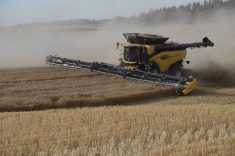Futures are doing everything they can to blacken farmers’ financial outlook, just as they hit the fields to invest all they have and can borrow in another crop.
Fortunately for farmer spirits, most are too busy now to be looking at price charts. Hitting 52-week lows right at seeding time could deflate a lot of the usual seeding time joy.
November 2023 canola futures have fallen about $200 per tonne, from $880 per tonne to $680, in the past 12 months.
However, the profitability outlook isn’t nearly as weak. Fall fertilizer prices are much better than they were, and not bad in terms of the measure StoneX’s Josh Linville likes to use: cost in bushels per tonne to pay for fertilizer.
Read Also

India slaps 30 per cent import duty on yellow peas
India has imposed a 30 per cent duty on yellow pea imports with a bill of lading date on or after Nov. 1, 2025.
“Current eastern corn belt (ammonia) values versus December 2023 corn values remain the best value/lowest ratio that has been seen since 2018 for this period,” tweeted Linville April 20.
“This means you are spending the fewest bushels of corn per one ton of (ammonia).”
Bloomberg’s Green Markets fertilizer index has fallen 40 percent in the last year, which is more than most crop prices have fallen. Cheaper crops using much cheaper fertilizer could be an OK situation.
For farmers, though, there’s much more to profitability than comparing crop prices to fertilizer prices. Many other prices have surged in recent years, with most of those being more “sticky” and slipping far less than fertilizer.
That includes farm equipment, many pesticides, seed treatments and seed itself. Today’s weakness in crop prices means some of those prices have gone flat this spring, or slightly fallen, but not by as much as crops.
Interest rates have doubled and tripled for some forms of credit. Many debts will be painful to carry.
For a lot of farmers, that’s going to make lower fertilizer prices in 2023-24 (if that happens as futures values suggest) just a parachute that slows the fall, a seatbelt on the driver of a car that’s hitting a tree.
Regardless, many farmers will still make money in this calendar year, according to Farm Credit Canada analyst Martha Roberts.
“With commodity prices expected to ease in 2023, margins will fall,” she writes in an April 26 report.
“The good news is that they’ll fall from the past two or three years highs and remain positive throughout the outlook period. “
Roberts also offers a cheerier outlook on the supply and demand fundamentals than futures charts are recognizing.
“Two significant factors will help offset the fall in crop prices: continuing tight global supply/demand balances and dramatic slowdowns in the growth of farm inputs.”
Roberts also points to the crops-to-fertilizer prices ratio as reason for optimism about the rest of 2023.
As we walk into the new crop year, it’s worth recognizing some things that the markets usually focus on but are not right now. For several crops, ending stocks have fallen sharply. Stocks-to-use ratios for both world wheat and coarse grains have fallen.
Often the stock-to-use ratio is the single most important factor in crop markets, but right now it’s not driving the car.
Some time it might. The situation could become uncomfortably tight for commercial and state buyers, especially looking at the situation in Argentina and the southern U.S. Plains.
As Roberts notes, “world stocks-to-use ratios for the two commodities remain the lowest in the last six years and have not yet reversed the downward trend as we suggested they might, but their falls appear to have slowed.”
Profitability is getting squeezed this year, barring a major bull market in crop prices without a similar rally in input prices. But in terms of the fundamentals, it’s harder to make a bear case than a bull case right now.
If the world remains more concerned about a recession than it does about hunger and higher food prices, farmers might have to wait through some glum months of disappointing prices and high costs until there’s better profitability.
But if those tightening stocks keep getting tighter, farmers’ profitability situation might get brighter in a hurry.
















